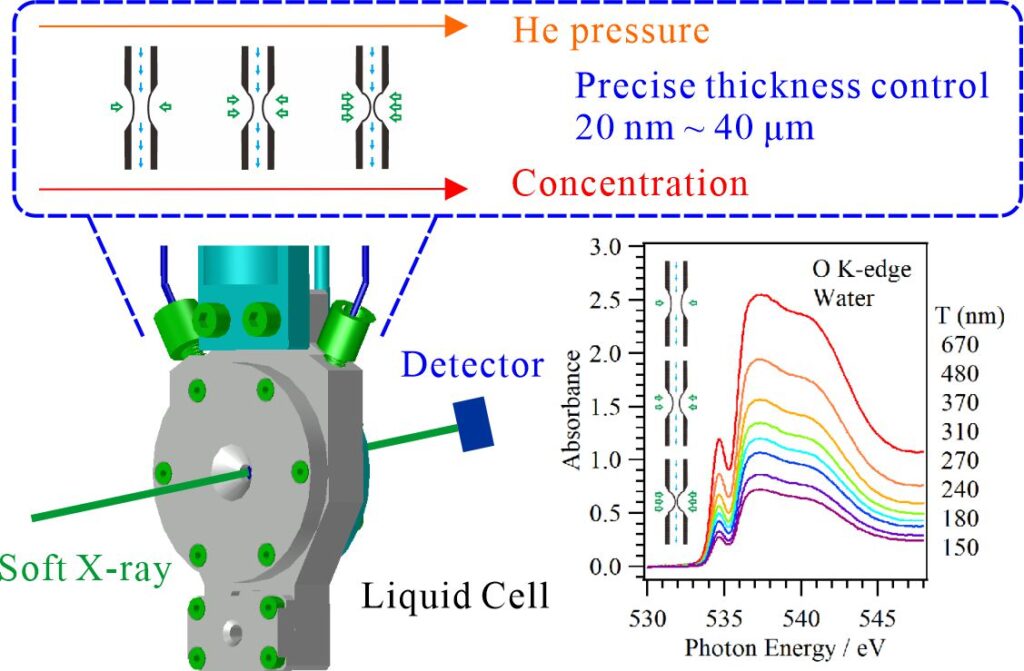The soft X-ray region below 2 keV has many chemically important absorption edges such as the K-edges of Li, B, C, N, and O; and the L-edges of 3d transition metals such as Ti, Mn, Fe, Co, Ni, and Cu. However, the measurement of XAS in the soft X-ray region is difficult because soft X-rays are strongly absorbed by airs and liquids, and the thickness of the liquid layer should be below 1 μm for the transmission of soft X-rays.
From 2010, we have developed a liquid cell for XAS in transmission mode at the UVSOR Synchrotron Facility, Okazaki, Japan [1]. Figure 1 shows the schematics of the liquid cell, whose details were described previously [2]. In the liquid cell, the liquid layer is sandwiched between two Si3N4 (or SiC) membranes with the thickness of 100 nm and the window size of 2 × 2 mm2. The SiC membranes were used for the nitrogen K-edge XAS measurements. The liquid cell is under an atmospheric helium condition, which is separated from the soft X-ray beamline under an ultrahigh vacuum condition using the Si3N4 membrane with the window size of 0.2 × 0.2 mm2. Liquid samples are exchangeable using a syringe pump. Temperature is controllable from −5 to 80 °C using a chiller system. The thickness of the liquid layer is precisely controlled from 20 nm to 40 μm by adjusting the helium pressure around the liquid cell. It is important for the XAS measurements of various solutions over a wide concentration region; the liquid layer is adjusted thicker in the dilute solution, and vice versa, for obtaining the appropriate absorbance of soft X-rays. The O K-edge XAS spectra of liquid water at different thicknesses were successfully obtained with the precise thickness control method, as shown in Fig. 1.
